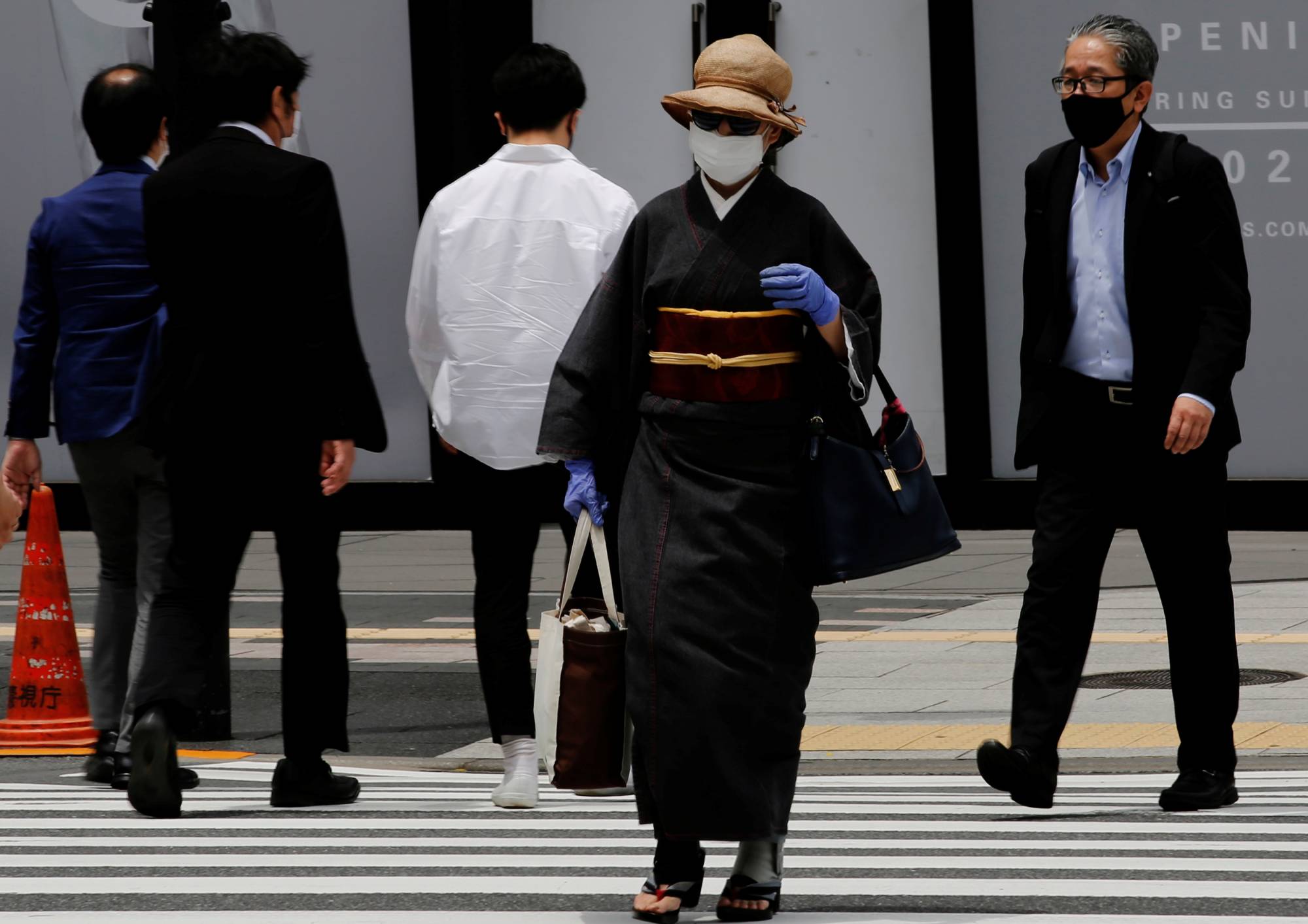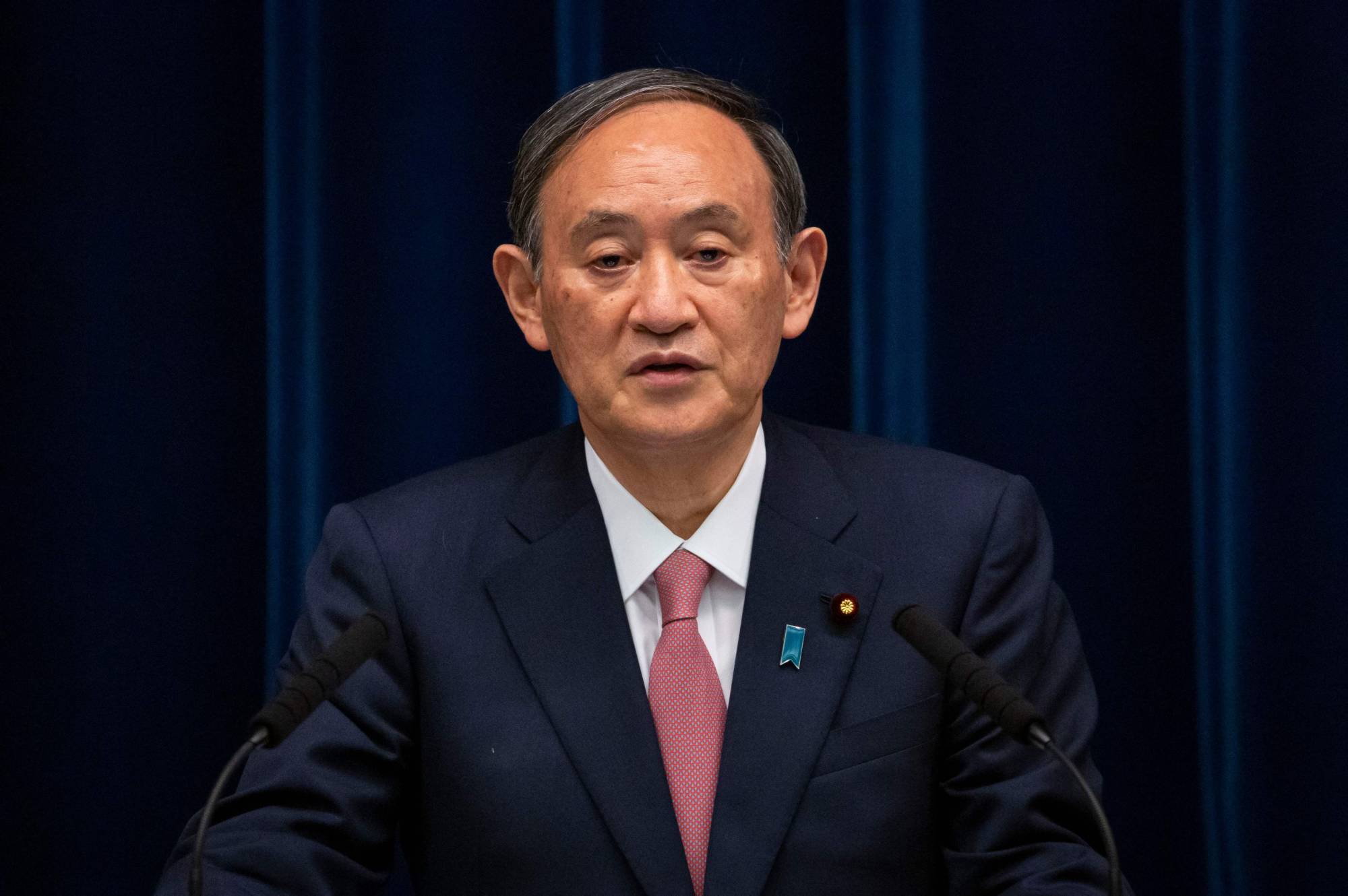Prime Minister Yoshihide Suga announced Friday evening that the country’s state of emergency set to expire in nine prefectures on Monday would be extended until June 20, the last day of the emergency in Okinawa Prefecture.
The order is to remain in place in Tokyo, Osaka, Kyoto, Hyogo, Aichi, Fukuoka, Hokkaido, Okayama and Hiroshima prefectures.
Pre-emergency measures will also be extended until then in five prefectures — Saitama, Chiba, Kanagawa, Gifu and Mie — but expire June 13 as originally planned in Gunma, Ishikawa and Kumamoto.
With the state of emergency active in 10 prefectures, pre-emergency measures in place in eight and dining establishments asked to close early in 18 others — all until at least around mid-June — restrictions of varying intensity are now in effect in more than three quarters of the country’s 47 prefectures.
Japan’s third and ongoing emergency was declared in late April but has since been extended three times and expanded three times after initial efforts failed to yield strong results.
If measures expire on June 20, the third emergency will have lasted longer than the country’s first, which continued for 48 days from early April to late May last year.
The current order now encompasses 10 prefectures where restaurants, bars and other dining establishments have been asked to close by 8 p.m. and stop serving alcohol completely.

When the order was first handed down in four prefectures in late April, department stores and other large commercial facilities were asked to close completely, and entertainment venue operators told to hold events online.
Those requests were loosened when the order was extended and expanded on May 12, and since then commercial facilities have been asked to close by 8 p.m. and event organizers urged to limit attendance to half capacity or less than 5,000 people.
However, governors have the freedom to issue closure requests to large commercial facilities or cancel large events.
Still, since coronavirus measures in Japan are largely voluntary — barring a possible fine for repeated infractions — a disparity has emerged between restaurants, bars and other eateries that do comply with requests, and those that choose to stay open to take advantage of the dearth in competition.
Yasutoshi Nishimura, the Cabinet minister leading the country’s coronavirus response, on Friday urged governors in the relevant prefectures to liberally issue closure orders to businesses that disobey requests by serving alcohol or staying open past 8 p.m.
As deadlier new variants continue to spread, the shortcomings of the nations virus laws, which don’t allow for compulsory or punitive measures, make it difficult for officials to reduce foot traffic and mass gatherings.
The public also grows more tired with each new state of emergency — or each time the order is expanded or extended — and requests to stay indoors or avoid travel lose their impact.
While efforts are being made to hasten the country’s sluggish vaccine rollout, its lackluster efforts to contain the virus have made the trajectory of the pandemic in the near future uncertain.
The nationwide count of COVID-19 patients with severe symptoms has been climbing steadily since the fourth wave began around late March.
That figure was a record-breaking 1,413 on Friday, up from the 1,371 reported the day before.
While most mild or asymptomatic patients are diverted to empty hotels converted into temporary lodging facilities — or asked to isolate at home — the need for severe patients to be hospitalized is crucial, and the ongoing surge threatens to overwhelm health care systems in parts of the country.
As a result, hospitals in major cities have been buckling under a surge in patients, especially in Osaka, where more than 90% of hospital beds reserved for coronavirus patients have been occupied for several weeks.



Variants of the coronavirus that are highly contagious, harder to detect and deadlier have overtaken the original strain of COVID-19 in a number of prefectures.
The N501Y variant — which emerged in the U.K. in December — is 1.9 times more contagious abroad and 1.32 times more contagious in Japan, according to the National Institute of Infectious Diseases.
The B.1.617 strain — which was first detected in India, where it continues to spread rampantly — is thought to be 1.5 times more contagious than the N501Y variants, and double that of the original strain.
In several prefectures — primarily Osaka, Hyogo and Tokyo — the N501Y variant has been detected in more than 80% of positive tests that were screened using genomic analysis or blood tests.
That figure, which was hovering at well below 10% in late March, has climbed dramatically and continues to prompt deep concern.
In Tokyo, the L452R variant found prominently in the B.1.617 strain accounted for nearly 7% of cases screened between May 17 and Sunday. Virologists and epidemiologists advising the capital say that number will most likely continue to rise.
Meanwhile, less than two months remain until the opening ceremony of the Tokyo Olympics, on July 23.
While organizers say ongoing measures won’t affect operations and that the games can and will be held safely, the limited impact of prolonged attempts to stifle Japan’s fourth wave of the pandemic is amplifying already heightened anxiety.
In a time of both misinformation and too much information, quality journalism is more crucial than ever.
By subscribing, you can help us get the story right.
SUBSCRIBE NOW


